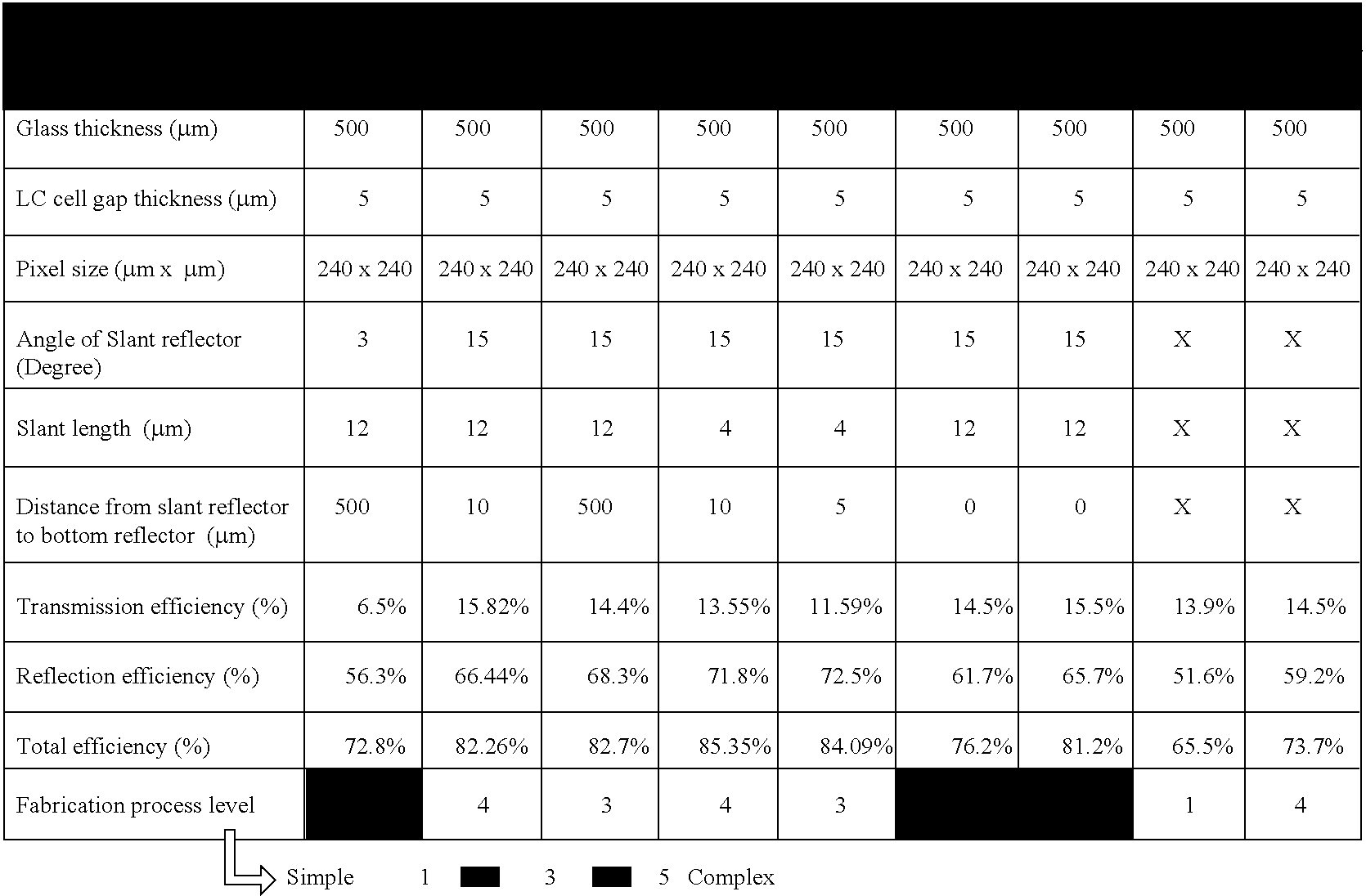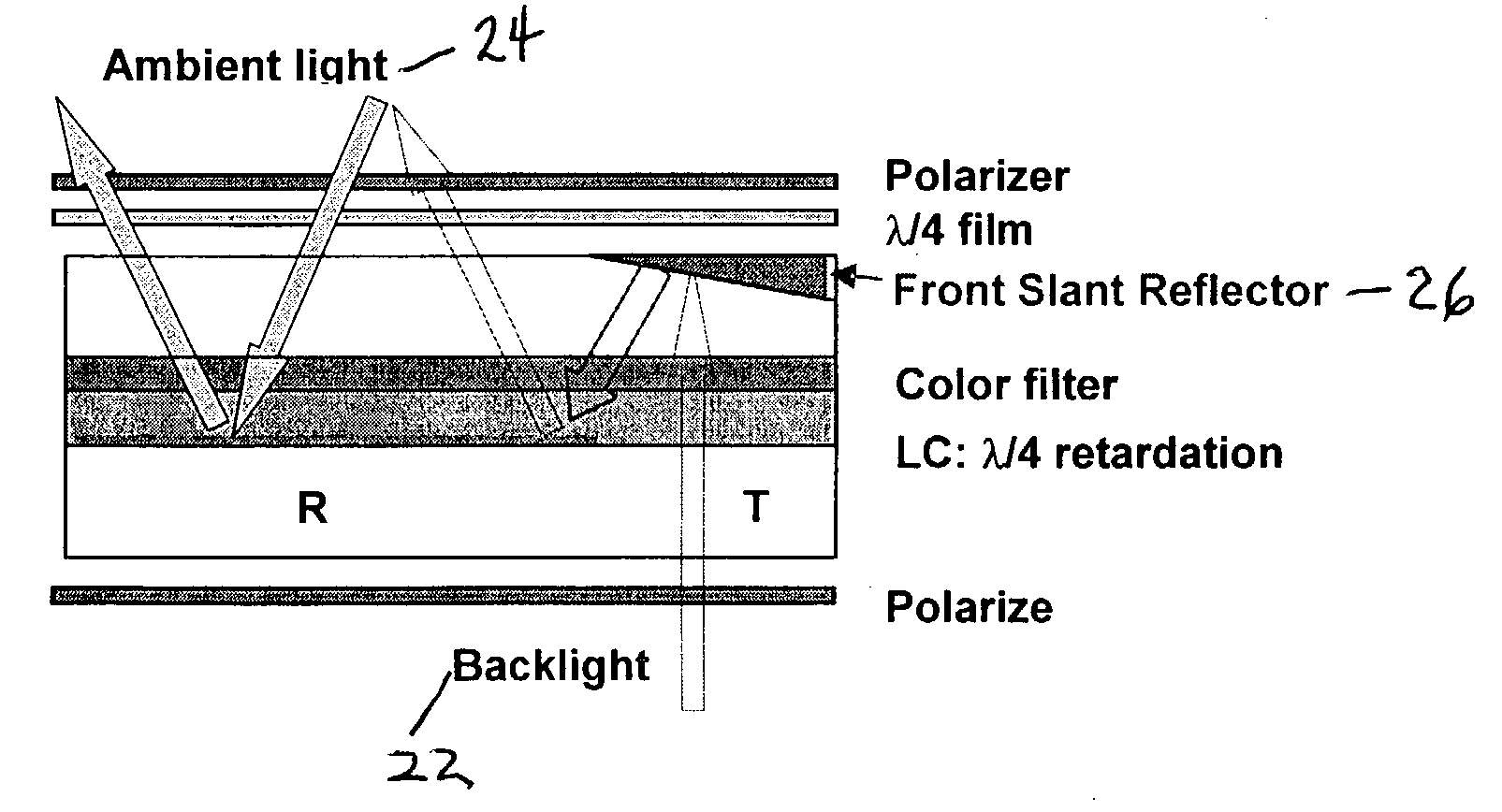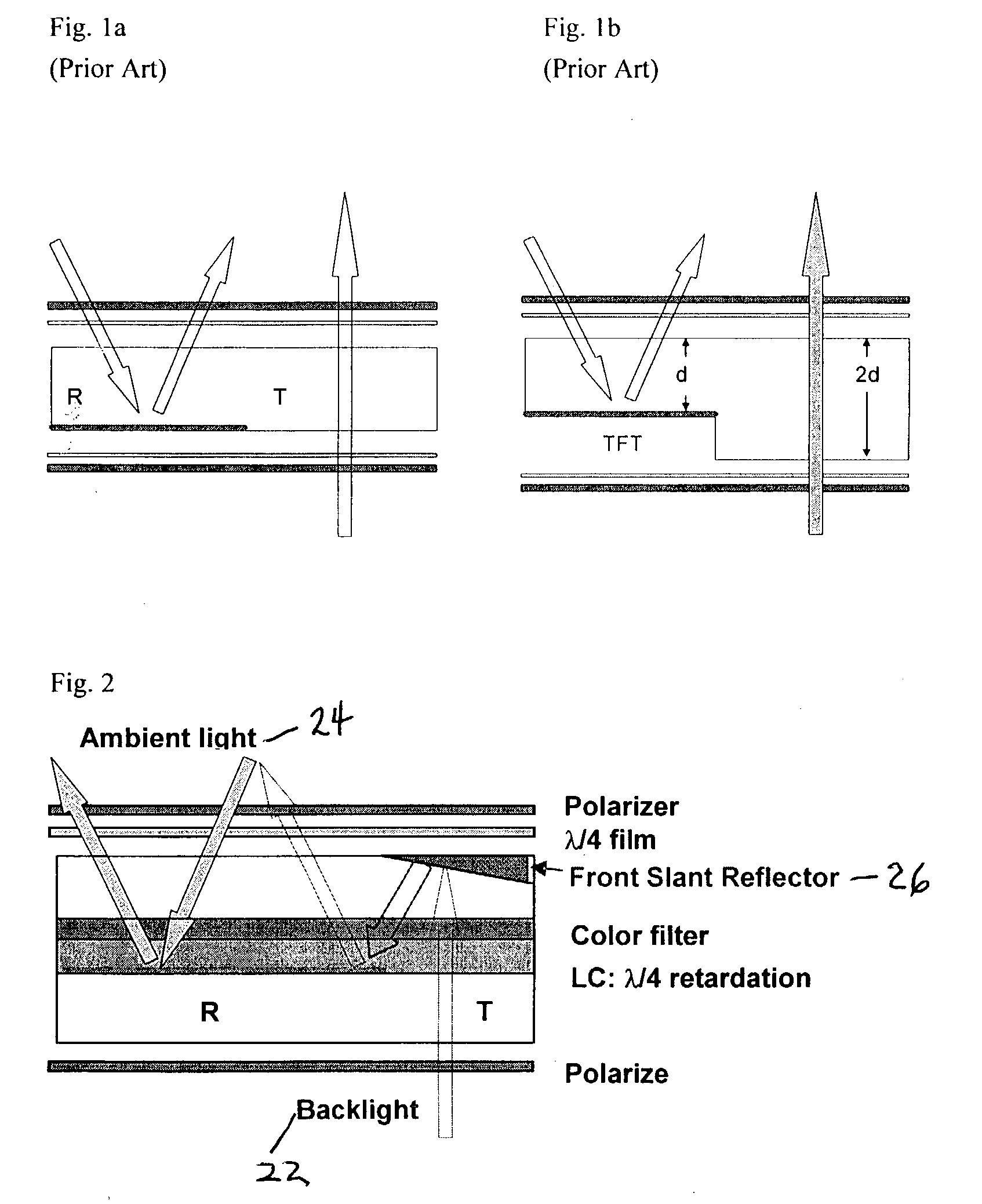Single cell gap transflective liquid crystal display with slanted reflector above transmissive pixels
a liquid crystal display and reflector technology, applied in non-linear optics, instruments, optics, etc., can solve the problems of r and t pixels having different color saturation, power consumption high, and low contrast ratio,
- Summary
- Abstract
- Description
- Claims
- Application Information
AI Technical Summary
Benefits of technology
Problems solved by technology
Method used
Image
Examples
example 1
[0074] The dimensions of the slant reflector on the front surface of top glass and the simulation parameters are listed in Table 1.
1TABLE 1 Parameters used for simulations. Glass thickness 500 (.mu.m) LC cell gap 5 thickness (.mu.m) Pixel size (.mu.m) 240 .times. 240 Angle of Slant 3 reflector (Degree) Space between 12 subpixel (.mu.m) Ratio of R:T 4:1
[0075] The simulation calculates the light efficiency of reflection and transmission with different illumination angles. As shown in FIG. 11, the highest reflection light efficiency is approximately 81% at normal incident (.theta.=0.degree., .phi.=0.degree.), and the lowest is approximately 48.36% at azimuthal angle (.phi.) equals approximately 45.degree. and polar angle (.theta.) larger than .+-.5.degree.. In addition, the transmission light efficiency reaches approximately 17.62% for the normal incident backlight and is decreased to approximately 1.4% at (.theta.=.+-.6.degree., .phi.=45.degree.). The half efficiency angle range of re...
example 2
[0076] The slant reflector on the backside of top glass and the simulation parameters are shown hereafter in Table. 2. The distance between slant reflector to and the reflector at the bottom of liquid crystal layer is approximately 25 .mu.m.
[0077] The simulation calculates the light efficiency of reflection and transmission with different illumination angles. As shown in FIG. 12 the highest reflection light efficiency is approximately 81% at normal incident (.theta.=0.degree., .phi.=0.degree.), and the lowest is approximately 48.36% at azimuthal angle (.phi.) equals 45.degree. and polar angle (.theta.) larger than approximately .+-.35.degree.. In addition, the transmission light efficiency is approximately 17.62% for the normal incident backlight and is decreased to approximately 2.45% at (.theta.=approximately .+-.30.degree., .phi.=approximately 45.degree.). The half efficiency angle range of reflection and transmission is approximately 30.degree. and approximately 25.degree., sepa...
example 3
[0078] The slant reflector on the backside of top glass with various distance (D) between slant reflector and the reflector at the bottom of liquid crystal layer had been simulated. The parameters are the same as shown in Table 2. The average light efficiency of reflection and transmission had been calculated. The ambient light was assumed as illuminated from polar angle .theta.=0.degree. to .theta.=45.degree. and azimuthal angle .phi.=+45.degree. to .phi.=-45.degree.. The backlight was assumed as .+-.20.degree. divergent angle. The simulated average efficiency is shown in Table 3.
3TABLE 3 The calculated reflection and transmission efficiency for different D values. Average Light Distance between slant reflector and bottom reflector efficiency D = 25 .mu.m D = 15 .mu.m D = 10 .mu.m D = 5 .mu.m Reflection 66.69% 71.8% 72.5% 75.7% Transmission 14.9% 13.7% 12.69% 9%
PUM
 Login to View More
Login to View More Abstract
Description
Claims
Application Information
 Login to View More
Login to View More - R&D
- Intellectual Property
- Life Sciences
- Materials
- Tech Scout
- Unparalleled Data Quality
- Higher Quality Content
- 60% Fewer Hallucinations
Browse by: Latest US Patents, China's latest patents, Technical Efficacy Thesaurus, Application Domain, Technology Topic, Popular Technical Reports.
© 2025 PatSnap. All rights reserved.Legal|Privacy policy|Modern Slavery Act Transparency Statement|Sitemap|About US| Contact US: help@patsnap.com



